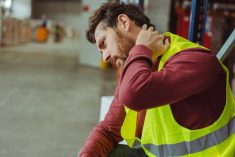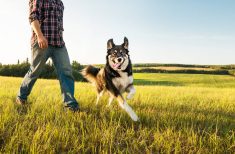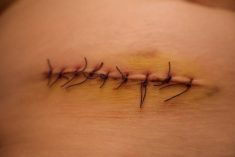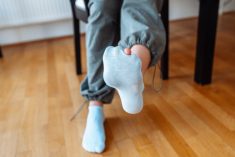A common complaint that comes along with the farm lifestyle and career is back pain. Non-specific low back pain — meaning the pain has begun with no clear incidence and doesn’t have one clear cause — makes up over 80 per cent of back pain complaints.
In my line of work, often it isn’t as important to know exactly what is causing the pain anatomically, nor is that even always possible. Rather, it becomes important to have some strategies that work for the individual experiencing pain that help them ease discomfort and continue to have a high quality of life.
Back pain often occurs due to a complex cycle of musculoskeletal tension and compensation, repetitive movement and strain and inflammation in the whole system. Stress, physical labour, repetitive movements, nutrition, history of trauma, emotional well-being and sleep hygiene can all play a role in how we experience back pain. Alongside these, we can also be impacted by the type of shoes we are wearing, mattresses and even the weather. Some of these factors we can adjust and control, but many we cannot.
Read Also

Gentle treatments for pain in the neck
Heading toward year-end, people unknowingly tense up against the cold and busyness, causing neck pain that can often be treated with appropriate support and gentle mobility, athletic therapist Kathlyn Hossack says.
The good news is, there are some at-home things you can work on, alongside seeking appropriate professional support such as physical therapy, manual therapies such as massage and, of course, seeking the advice of your trusted health care provider.
I’m all about efficiency and accessibility when I prescribe tools like at-home movement for individuals to try. Here are two of my favourite go-to movements to support remediation of back pain:
Spinal rolls
Standing with the feet about hip width apart, begin with the head and slowly begin to roll down, curving the spine gradually toward a forward-fold position. Keep the hands gently resting on the thighs to help guide your way into reaching toward the toes. It is important to keep the knees slightly bent as you roll downward through the spine. Visualize each vertebra or section of the spine rolling forward and down as you go. Once you roll as far into a fold as you can, take a breath or so in the folded position, perhaps bending just slightly more into one knee and then the other to stretch the backs of the legs a few times.
When you’re ready, begin to slowly roll your way upward to standing. Begin at the base of the spine and visualize stacking one vertebra or segment of the spine on top of the next, with shoulders, then neck, then head stacking last.
Repeat this roll down and roll up a few times, within a range that doesn’t create pain. You’ll notice after a few rounds that it gets easier to lengthen the body in both directions. This is an excellent movement after extended periods seated or driving. It helps to traction out the spine and hips, stretch the backs of the legs and the back itself, and bring some extra space to the joints in the spine that can become compressed when we are seated or standing for long periods.
Knee sways
Laying on your back, bend both knees so the feet can meet the surface underneath you. Take the feet wider than the hips. Then allow the knees to slowly move toward one direction and then the other, like windshield wipers. Go side to side, moving slowly, within a range of motion that is fairly easy. We don’t need to find a big stretch, just a slow easy trajectory of movement. Repeat this for one minute at a time, laying on the floor or even in bed, a few times per day.
Take pain seriously
With any case of back pain that comes on suddenly and doesn’t change with movement or conservative therapies, it is important to consult your medical provider. Pain that lasts and doesn’t change is not normal and should be taken seriously from a medical standpoint.















